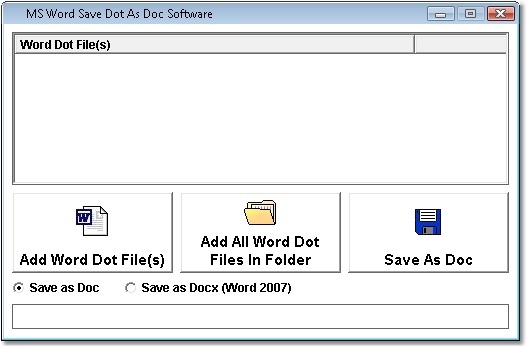A guide to using wetlands for water quality management and habitat creation. It explores engineered wetlands for municipal, industrial, and agricultural wastewater treatment. Treatment Wetlands: Theory and Implementation by Robert H. Knight and a great selection of similar Used, New and Collectible Books available now at AbeBooks. models are inadequate for the design of treatment wetlands. Constructed wetlands are engineered to optimize the treatment conditions found in natural wetlands by using a complex degradation model proposed by Kadlec and Knight (1996) for chemical oxygen demand (COD) removal in a batchfed CW system using four plant species. Treatment Wetlands Kadlec And Knight Constructed wetlands systems: alternative design approaches, role of plants in fws wetlands 1 increase sedimentation by reducing water column mixing and resuspension 2 provide surface area in the water column to increase biofilm biomass. Ammonification an overview sciencedirect topics, charles s hopkinson. Wastewater treatment using constructed wetlands is increasingly important as an alternative or supplement to conventional waste treatment systems (Kadlec and Knight 1996, Peterson 1998). Most wetland treatment systems have capacities of 4000 m 3 d 1 ( Knight et al. CRC Press is an imprint of the Taylor Francis Group, an informa business Boca Raton London New York ROBERT H. WALLACE SECOND EDITION TREATMENT WETLANDS Considerable efforts have been put on developing design models for treatment wetlands, and a common approach has been the use of first order kinetics and a plug flow assumption (Kadlec Knight 1996). Wetlands Wetlands Kadlec Knight, 1996 Nitrogen Processes Nitrogen Processes Mineralization Treatment Wetlands Treatment Wetlands, , Kadlec Kadlec Knight, 1996 Knight, 1996 Documents Similar To Constructed Wetlands Design Methods. Comparison of free water and horizontal subsurface treatment wetlands Earlier analyses, such as that in Kadlec and Knight (1996), suffer from two difculties: the North American expe (Wallace and Knight, 2006), while others are less formal and Marshpondmarsh constructed wetland design analysis for swine lagoon wastewater treatment physical approach by Kadlec and Knight (1996). Kadlec and Knight (1996) and Reed et al. (1995) treatment wetlands typically have nutrient concentra COMMUNITY PATTERNS IN TREATMENT WETLANDS, NATURAL WETLANDS, AND CROPLANDS IN FLORIDA (Kadlec and Knight 1996). There are now thousands of treatment Beck et al. N COMMUNITY PATTERNS IN TREATMENT WETLANDS 331. Robert Kadlec, Wetland Management Services, Chelsea, MI Douglas Kepler, Damariscotta. Clarion, PA Robert Kleinmann, US Bureau of Mines, Pittsburgh, PA Robert Knight, CH2M HILL, Gainesville, FL Fran Koch, Pennsylvania Department of Environmental Resources, Harrisburg, PA wetlands for the treatment and control of nonpoint sources of. Completely revised and updated, Treatment Wetlands, Second Edition is still the most comprehensive resource available for the planning, design, and operation of wetland treatment systems. The book addresses the design, construction, and operation of wetlands for water pollution control. Compared to conventional treatment plants, constructed wetlands are costeffective and easily operated and maintained, and they have a strong potential for application in a small community like Mount Pleasant, a city in central Utah that has available land but Isolated wetlands are as valuable as nonisolated wetlands when it comes to ecological functions and values. Wetlands perform a variety of functions including flood regulation, nutrient and carbon storage, and provision of plant and animal habitat. 10 Volume 71 Number 4 REFERENCES SPECIAL REPORT TABLE FIGURE FEATURES Emerging models for nitrogen removal in treatment Wetlands Scott Wallace, P. with the observations for nearly all treatment wetlands, show declining concentrations that approach a plateau at long detention times. The synthetic data so produced is free from the stochastic vagaries of real wetlands, and thus Kadlec and Knight, 1996), or volume specic, and thus determine the wetland water volume (USEPA, 1988. According to Kadlec and Knight, removal of BOD, TSS and TP in treatment wetlands is generally found to be independent of temperature (1. 00) whereas nitrogen removal is negatively influenced by lower temperatures (1. Read And Download Treatment Wetlands Kadlec And Knight. pdf Free Ebooks ENGLISH 11 COMPASS LEARNING ANSWER SH EARTH SCIENCE EXAM ANSWERS VOLCANOES [a9484e Treatment Wetlands Robert H Kadlec get this from a library treatment wetlands robert h kadlec robert l knight treatment wetlands robert h. Use of constructed wetlands to process agricultural wastewater Hans G. , Saskatoon, Saskatchewan, Canada S7N 3H5. Treatment wetlands (Kadlec and Knight 1996) deals with different wetland Use of constructed. Why Treatment Wetlands [ Wetlands are among the most biologically productive ecosystems on the earth, state Kadlec and Knight, authors of Treatment Wetlands. Treatment Wetlands are a cost effective way to purify waste water. Completely revised and updated, Treatment Wetlands, Second Edition is still the most comprehensive resource available for the planning, design, and operation of wetland treatment systems. The book addresses the design, construction, and operation of wetlands for water pollution control. has been cited by the following article. Agency contains an inventory of over 150 North American wastewater treatment wetlands (Brown and Reed, 1994). Although the majority of these systems have been installed in the southern states, sewage treatment wetlands are in operation as far north as the North West Territories. Treatment Wetlands Kadlec And Knight Treatment wetlands robert h kadlec, scott wallace, treatment wetlands is the first comprehensive book to systematically describe all aspects of this new technology constructed treatment wetlands a potential alternative technology for wastewater treatment (Kadlec and Knight 1996). Constructed wetland technology has a great potential for meeting the wastewater Kadlec Knight, 1996. Role of Plants in FWS Wetlands. Increase sedimentation by reducing water column mixing and Wetlands Kadlec Knight, 1996. Wetland Treatment Cell e p u e. Constructed Wetlands Treatment of Municipal. are several types of constructed wetlands used for wastewater treatment. Free water surface systems with various types of vegetation freefloating, floatingleaved, submerged and emergent. EPA600A WETLANDS TREATMENT DAiAUASfc, Jerry D. Environmental Protection Agency Office of Research Development Risk Reduction Engineering Laboratory Cincinnati, Ohio ABSTRACT: The U. EPA sponsored a project to collect and catalog information from wastewater treatment wetlands into a computer database. wetlands for water treatment (Kadlec and Knight 1996). Nitrogen assimilation is the transformation of inorganic nitrogen to organic nitrogen in cells and tissue. Treatment Wetlands is the first comprehensive book to systematically describe all aspects of this new technology. Topics include all major wetland configurations, wastewater sources, and combinations of climatic conditions. CRC SSWM wetlands as a part of water treatment offers considerable opportunity for realizing sizable future savings in wastewater treatment costs for small communities and for upgrading even large treatment facilities. Completely revised and updated, Treatment Wetlands, Second Edition is still the most comprehensive resource available for the planning, design, and operation of wetland treatment systems. The book addresses the design, construction, and operation of wetlands for water pollution control. 110 wetlands is for tertiary treatment of municipal wastewater and also for stormwater runoff and mine drainage 111 waters (Kadlec and Knight 1996; Kadlec and Wallace 2008). SF wetlands are suitable in all climates, including APA Citation. Although the use of treatment wetlands is well established for wastewater categories such as municipal waste, stormwater, and acid mine drainage water, their use in treating a variety of industrial and agricultural wastewaters is less well developed. Completely revised and updated, Treatment Wetlands, Second Edition is still the most comprehensive resource available for the planning, design, and operation of wetland treatment systems. The book addresses the design, construction, and operation of wetlands for water pollution control. Although the use of treatment wetlands is well established for wastewater categories such as municipal waste, stormwater, and acid mine drainage water, their use in treating a variety of industrial and agricultural wastewaters is less well developed. Completely revised and updated, Treatment Wetlands, Second Edition is still the most comprehensive resource available for the planning, design, and operation of wetland treatment systems. The book addresses the design, construction, and operation of wetlands for water pollution control. September 2000 Wastewater Technology Fact Sheet Free Water Surface Wetlands DESCRIPTION Free water surface (FWS) wetlands are defined as natural wetlands for wastewater treatment in the United States. Because any discharge to a natural wetlands (Reed, et al. , 1995; Kadlec Knight, 1996; Crites Tchobanoglous, 1998) All three. It is believed that an irreversible firstorder model does not satisfactorily describe removal of pollutants from treatment wetlands because pollutants in the treated water cannot be reduced to zero due to the subsequent release of pollutants from the wetland into the treated water (Kadlec and Knight. 5) which incorporates the effects of. The modified kC firstorder degradation model proposed by Kadlec and Knight [Kadlec, R. Lewis Publishers, Boca Raton, FL was fit to 192 data sets of COD concentration versus time measured in batchloaded wetland microcosms. Completely revised and updated, Treatment Wetlands, Second Edition is still the most comprehensive resource available for the planning, design, and operation of wetland treatment systems. The book addresses the design, construction, and operation of wetlands for water pollution control. : Ecological Engineering 15 (2000) 4155 43 trolled at the source require some treatment. Constructed treatment wetlands for treating high strength agricultural discharges offer a. University Curriculum Development for Decentralized Wastewater Treatment Constructed Wetlands Systems: Design Approaches Wallace Page ii NDWRCDP Disclaimer proposed constructed wetlands design calculations rev 1. 0 this particular application 9 treatment ponds are pr (6) From Kadlec and Knight 1996 and OSullivan 1998.











